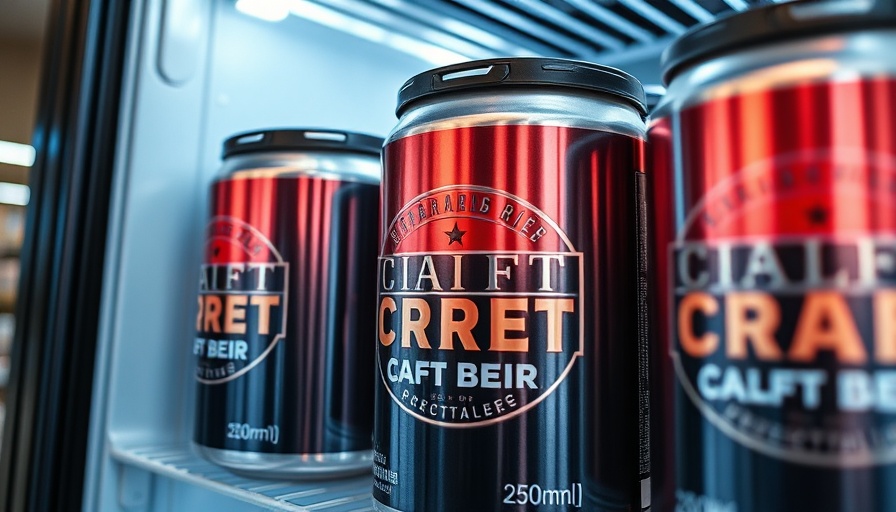
The Impact of Tariffs on Craft Breweries
As of today, a new 25% tariff on imported aluminum and steel has gone into effect, significantly affecting industries dependent on these metals, especially the craft beer sector. The craft brewery Talea Beer Co. is already expressing concern over this price hike, which could lead to more expensive beer for consumers. This tariff comes at a challenging time when breweries are still recovering from the pandemic's impact on production and distribution.
How Tariffs Drive Up Beer Prices
The beer industry is one of the largest consumers of aluminum, primarily used in can production. Previous tariffs on aluminum have already raised costs in the beer sector, forcing breweries to make tough decisions. In 2018, for instance, a 10% tariff led to an estimated $1.4 billion in additional costs across the industry. Now, the imposition of a 25% tariff could further escalate these financial burdens.
Challenges for Small Breweries
Many small craft breweries operate on thin profit margins and face significant challenges in coping with increased material costs. Unlike larger companies that can absorb some price increases, smaller breweries may raise their prices to reflect these changes, risking a decline in consumer demand. For these independent breweries, the loss of customers could seriously impact their survival during this period.
Connecting the Dots: Supply Chain Complications
The ramifications of this tariff extend beyond cans. Equipment and parts, often imported from various countries, could also see price increases. For example, small breweries frequently order malted barley from suppliers that source their grains from Canada, reliant on cost-effective and responsive contracts. With a surge in tariffs, these costs could become prohibitive, further complicating the supply chain.
Public Sentiment and Future Predictions
Consumers may initially tolerate slight increases in beer prices, but a considerable hike could shift purchasing behavior. The Brewers Association has noted that consumers might lean towards more affordable brands or alternatives, which can adversely affect craft breweries that thrive on niche market appeal. As prices escalate, this paradigm may become unsustainable, prompting a reassessment of business strategies.
The Broader Economic Impact
This situation is not isolated to beer consumers. As breweries begin to face these challenges, a ripple effect could spread throughout the economy, especially within the hospitality sector. Pubs and restaurants, major outlets for craft beers, could also see declines in revenue if customers react to increased prices by drinking less or opting for cheaper options. The beer market’s interconnectedness means that strain on one segment will inevitably pressure others.
Resilience and Adaptation in the Brewing Industry
Traditionally, the craft brewing industry has shown resilience. Many brewers are now exploring alternative sourcing options or ingredients that may lessen their dependence on aluminum. Additionally, some breweries are increasing their focus on direct sales at taprooms, providing them with fresh revenue avenues regardless of retail price pressures posed by tariffs.
Actionable Insights for Consumers
As tariffs unfold, consumers can play an active role by supporting local breweries. Knowing the impact of these tariffs can empower consumers to make informed choices and advocate for their favorite craft beers. By purchasing directly from breweries, consumers can help sustain local businesses during these challenging times.
In conclusion, while the new tariffs on imported aluminum and steel present challenges for the brewing industry, there is an opportunity for adaptation and growth. By understanding these shifts, consumers can make choices that support their local economies, and breweries can employ innovative strategies to remain resilient amid rising costs.
 Add Element
Add Element  Add Row
Add Row 



 Add Row
Add Row  Add
Add 


Write A Comment